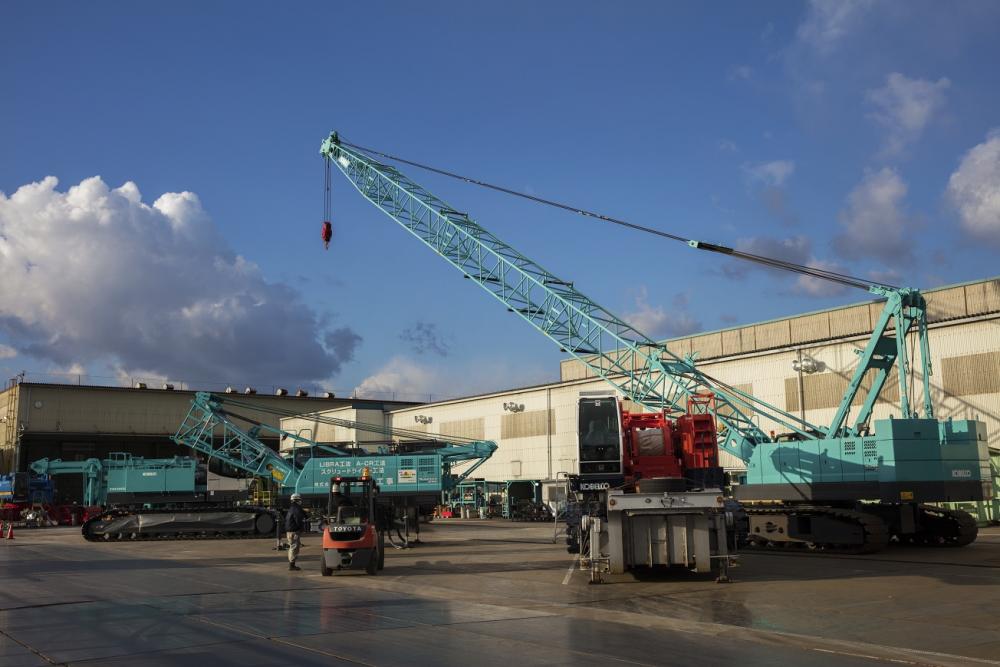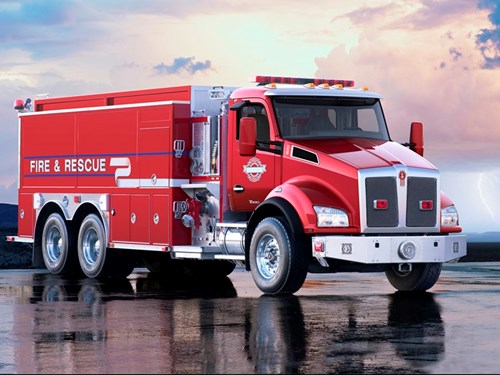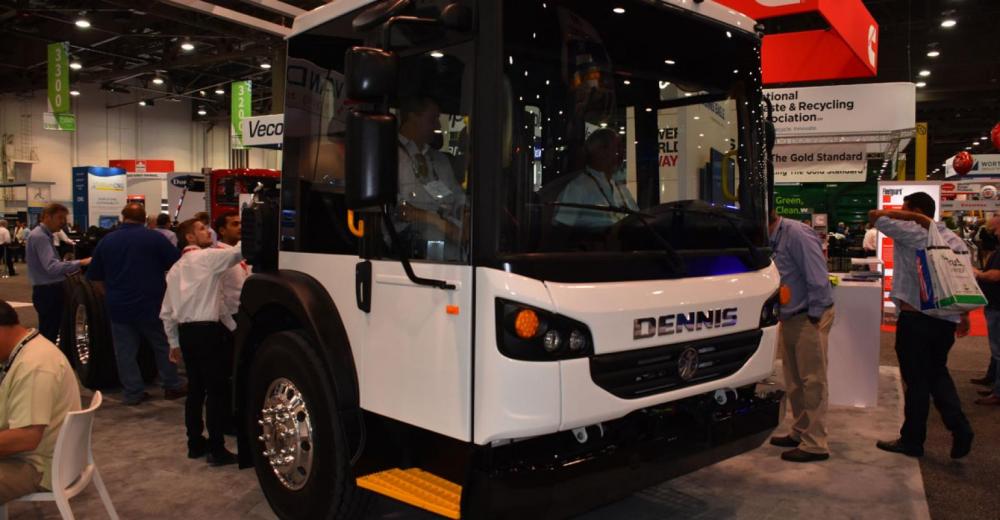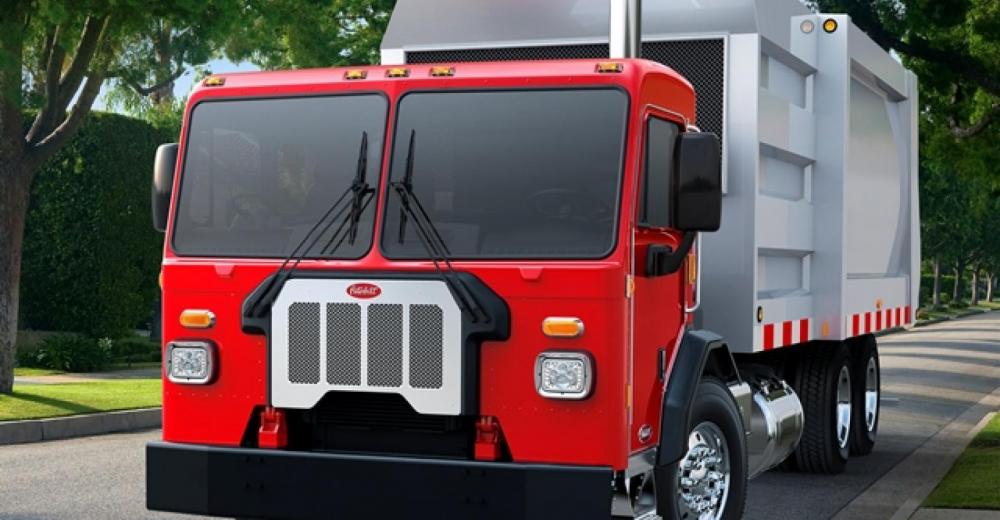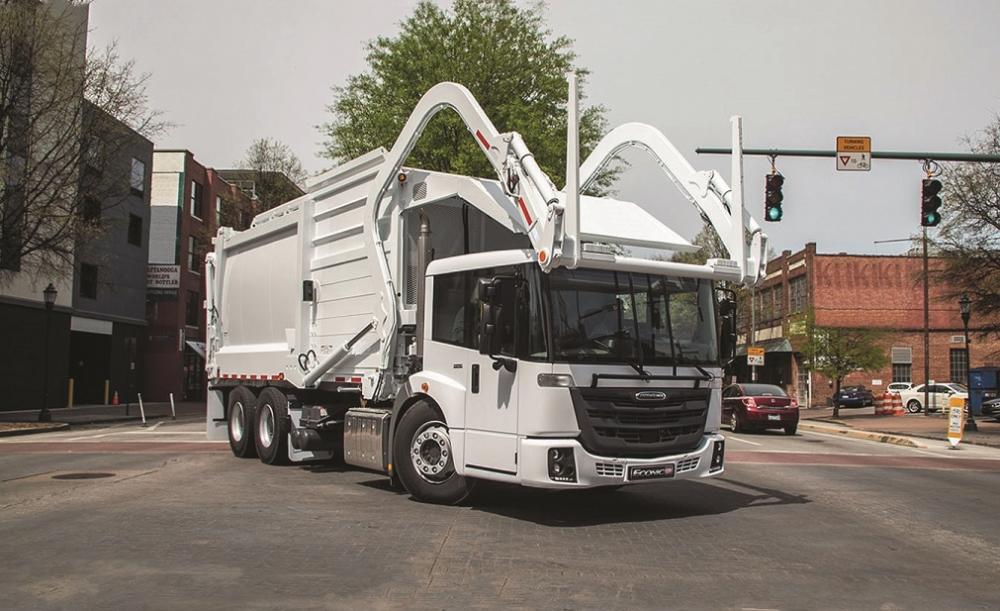
kscarbel2
Moderator-
Posts
18,854 -
Joined
-
Days Won
114
Content Type
Profiles
Forums
Gallery
Events
Blogs
BMT Wiki
Collections
Store
Everything posted by kscarbel2
-
. .
-
.
-
Scania Group Press Release / April 27, 2018 Swedish owner-driver Magnus Persson has just invested in a new Scania R 410. Although the truck comes equipped with the latest technology, Persson will not be fully satisfied until he’s added a state-of-the-art hi-fi system. So, before heading off to the bodybuilder, he makes a detour to his "sound guy." .
-
Scania Group Press Release / April 26, 2018 Kobelco’s huge new cranes reach farther and lift loads of 300 tonnes or more. Scania engines provide these massive machines with the power they need. Our world is growing ever larger. Taller buildings, wider bridges, more colossal goods. To handle them we need bigger and bigger equipment. For Kobelco Construction Machinery Co., the size revolution has led to its own challenge. After years of dominance in the market for small-to-mid-sized cranes with lifting capacity under 250 tonnes, Japan’s leading crane manufacturer is now staking a claim among the heavyweights. In January, the company shipped its largest-ever multi-purpose crane, a giant crawler with a maximum lifting capacity of 300 tonnes as standard (350 tonnes in the super heavy lift, SHL, specification). That’s a load moment, or point of overturning, that is 40–60 percent higher than that of a 250-tonne crane. It is also enough to rival machines from the 400 to 500-tonne class, thanks in part to the torque and power efficiency of Scania’s 13-litre, six-cylinder, 450 hp engine. “Almost 90 percent of mobile cranes sold worldwide are in the 250-tonne class and under, where we’ve been very strong, but the last 10 percent brings in almost as much revenue,” says Koichi Shimomura, senior manager in the crane engineering department of Kobelco Construction Machinery. “That top 10 percent requires lots of customisation,” something that results in higher prices and sales. Having spent years perfecting hydraulics, cabins and lifting technologies in its smaller devices, Kobelco felt it was time to apply them to the upper echelons of the crane world. The company decided to focus its new model, designed from scratch, overseas – on the North American market, as well as on South-East Asia and Europe. Japan, which accounts for 40 percent of Kobelco’s crane sales, will have to wait awhile for the new offering. “We are strong in Japan, which also has quite different needs,” says Shimomura. Now, the firm wants to make a bigger impact globally. Making the jump in weight is by no means easy. A team of 10 requires two weeks to assemble the new CK3300G model, which boasts a boom length of 90 metres (295 feet). The crane has to be delivered to clients in more than 25 pieces, none of which must exceed a width of three metres (10 feet) for the sake of easy transportation. What’s more, all work has to be done by hand, without recourse to an assembly line or the specialist welding robots that Kobelco employs for smaller devices. “The size of it… it just wouldn’t fit on an assembly line right now,” Shimomura says as we tour a Kobelco Construction Machinery factory to the west of Kobe City. The cavernous facility, which employs 500 factory staff, reverberates with a cacophony of thuds, grinds and drilling. We walk past a safety centre outfitted with its own maneki-neko figurine, a golden lucky cat associated with fortune. In the separate area for large-crane assembly, men in brown aprons fix pipes inside a lattice tower, ready for welding. Rows of wrenches and spanners hang neatly at designated desks. So far, Kobelco has shipped two of its new cranes to a rental firm and a dealership in Texas. A further two will be delivered to Indonesia during the first half of this year. It is the first time that Kobelco has used Scania’s engines, and the company hopes that with Scania’s help the new crane will become the ultimate all-rounder in its category, used as much for the building of bridges and the hammering of pylons into the ground, as for the moving of materials around construction sites. Scania is confident that it can help Kobelco meet its needs. “Working with a crane demands a lot of precision and a lot of power, so good driveability and good response are vital, as are smooth and consistent power and torque,” explains explains Haruyuki “Cookie-san” Mayama, Engine Sales Manager for Scania Engines, Japan. “Reliability is also key, because in the construction industry cranes are very often used in very expensive, one-time contract jobs that have a very tight time schedule; in essence, time is money. However, we believe that Scania’s 13-litre, six-cylinder, 450 hp engine can certainly provide what’s required.” So far, Koichi Shimomura and Kobelco agree. “We have faith in this device… and we are not done with the 300-tonne class. We see that Scania has the vision to go higher in weight capabilities,” says Shimomura. Both Kobelco and Scania are known for reliability, which will be key in the follow-up after sales. Given Scania’s responsiveness so far and the ability of the two to communicate easily, Shimomura says he feels this is the start of a great partnership. “It’s our first time working with Scania. But, I already feel we can be partners, and we need to move together to make this a success.” The engine Scania’s 13-litre, six-cylinder, 450 hp engine is powering the new CK3300G model crane, which boasts a boom length of 90 metres (295 feet). “The engine has good and smooth power and torque. An excellent driveability and response is needed for accurate, precise crane work. The reliability is crucial since construction jobs are on very tight schedules,” says Haruyuki “Cookie-san” Mayama. The company Kobelco is a global company manufacturing excavators and cranes. .
-
Renault Trucks Press Release / April 25, 2018 Renault Trucks C is the lightest rigid truck on the market for transporting concrete. Its light tare weight means exceptional payload and improved productivity for time-limited deliveries such as transporting ready-mixed concrete from the plant to the site. An increased approach angle, ground clearance and reduced turning radius make Renault Trucks C the best truck to handle essential deliveries. Renault Trucks C delivers more for less. .
-
-
Mercedes-Benz's Econic refuse truck comes to North America
kscarbel2 replied to kscarbel2's topic in Trucking News
I like Dennis Eagle. They're owned by Terberg RosRoca. http://www.terbergrosroca.com/en/products/ -
Mercedes-Benz's Econic refuse truck comes to North America
kscarbel2 replied to kscarbel2's topic in Trucking News
Here's the European market Econic. . . -
Western Star Press Release / April 27, 2018 .
-
Kenworth Truck Co. Press Release / April 25, 2018 Kenworth announced today that it will offer its new National Fire Protection Association (NFPA) prep kit for the Kenworth T680 on-highway flagship and Kenworth T880 vocational leader. The announcement is in conjunction with this week’s 91st annual FDIC (Fire Department Instructor’s Conference) International show, the world’s largest firefighter training and conference and exhibition, being held in Indianapolis. The kit includes the vehicle data recorder (VDR) pre-wire, seat occupancy sensors, height-limited seats, NFPA floor mat, and ingress/egress packages that all meet NFPA requirements. The T680 and T880 both feature Kenworth’s 2.1-meter wide cab, which has been validated to meet NFPA cab strength guidelines. .
-
International Trucks Press Release / April 26, 2018 . . .
-
Mercedes-Benz's Econic refuse truck comes to North America
kscarbel2 replied to kscarbel2's topic in Trucking News
-
-
Today is April 28
kscarbel2 replied to j hancock's topic in Antique and Classic Mack Trucks General Discussion
How is John DeChant? Great guy. -
Serial number tag on door jamb illegible
kscarbel2 replied to 217 In motion's question in Mack Truck Q & A
Take a picture. -
Dennis Eagle Launches ProView Refuse Truck in U.S.
kscarbel2 replied to kscarbel2's topic in Trucking News
Dennis Eagle’s ProView cab premieres Trailer-Body Builders / April 27, 2018 LAS VEGAS. There’s a new refuse truck builder in town. New to North America, anyway. Dennis Eagle Inc. – a subsidiary of leading U.K. garbage and recycling collection vehicle manufacturer Dennis Eagle – launched the new ProView high-performance cab, designed to meet the needs of customers in the U.S. and Canada, at this year’s WasteExpo. “While the Elite chassis with ProView cab has been engineered specifically for customers in the U.S. and Canada, it is based on an established design that has a proven track record as one of the safest and most reliable cabs in the U.K. and Europe,” said Robert Mecchi, president of Dennis Eagle Inc. “First introduced in the 1990s, the Elite cab has undergone many upgrades and developments since then. With unrivalled visibility, access and focus on safety, as well as comfort, and a proven U.S. drivetrain, it is what the market has been asking for.” The first models went on trial with customers earlier this year and have been “extremely well received,” Mecchi added, and more are at various body builders awaiting delivery. Dennis Eagle will start production in early 2019. Offering the best and safest in-cab visibility in class, the Dennis Eagle ProView is built to withstand the toughest conditions and features an ergonomic design specifically engineered to provide maximum comfort for drivers and crews, the company said. Narrowed ‘A’ and ‘B’ pillars aid peripheral vision to give an unobscured view and prevent traffic disappearing from sight, while longer, panoramic windows provide enhanced over-the-shoulder visibility at junctions. The cab is also positioned closer to the road, giving drivers a better sense of the vehicle’s proportions and more visibility of cyclists and pedestrians. At around 17” from street to step, the ProView will be one of the lowest entry cabs on the market, with a flat, unobstructed walk-through design helping to reduce leg and back strain for operators, according to Dennis Eagle. Fewer dash-mounted switches and a telescopic, tilting steering wheel with unrivalled steering radius make for simple operation, while noise levels below 70db(A) will further enhance operator and crew comfort. Initially available in a 6x4 configuration, the ProView is available with dual control and left-hand steer options in diesel, and we will also be offering CNG variants, with both 3000 or optional 4000 series Allison gearbox. . -
Mercedes-Benz's Econic refuse truck comes to North America
kscarbel2 replied to kscarbel2's topic in Trucking News
'Because we can' – Freightliner targets refuse market with new EconicSD low COE Trailer-Body Builders / April 25, 2018 Leading body builders played an important role in bringing the latest Freightliner truck to the North American market. LAS VEGAS. Filling an untapped market niche in their product portfolio, Freightliner Trucks on Tuesday introduced the new Freightliner EconicSD refuse truck at WasteExpo. The low-entry cab-over-engine (COE) vehicle is “purpose built” and “without compromise” in its implementation of the latest in integrated safety systems, explained Richard Saward, general manager of vocational sales and government vehicle sales for Freightliner Trucks. He also touched on the company’s reasoning for making the substantial investment needed to bring a new truck to a segment that’s a very small slice of the vocational market. Saward described the market currently as one in which three “tried and established players” fight for a share of 2,400-2,600 trucks per year—a total that would hardly register on the sales report of North America’s largest truck manufacturer. “We did it because we could,” Saward said. “No doubt many others would’ve liked to have done the same, but here at Daimler Trucks North America we have the ability to look at a global portfolio and imagine what those products could mean to our market.” The Freightliner EconicSD was adapted from the Mercedes-Benz Econic, a low-entry COE chassis that is popular with waste collection customers in Europe, Australia and Asia. The cab and chassis are designed and manufactured in Woerth, Germany—Daimler’s largest truck plant. More than 125 modifications optimized the truck for North American operations. Final assembly of the cab and chassis will be completed in Gaffney SC, at the Freightliner Custom Chassis Corporation (FCCC) manufacturing facility, before shipping to upfitters. Saward pointed to the Sprinter van, brought to North America after success in Europe, and how the traditional panel van quickly became “a relic of the past” as other manufacturers adopted new products to compete with the Sprinter. “We plan on doing that again [with the introduction of EconicSD],” Saward said. “From today forward, every traditional low COE on the market will be benchmarked against this new standard.” But all the safety systems, driver amenities and operational efficiency wouldn’t mean much if the Econic didn’t meet the needs of body builders and upfitters. “We’re proud to supply a quality chassis for this industry, and we truly recognize that most of the hard work in this industry takes place with the body and a well-designed body solution,” Saward said. “Early on in the program we engaged two of the industry leaders to ensure that the platform would work seamlessly with their equipment. These teams have spent thousands of hours looking at every nuance of the Freightliner EconicSD.” Representatives of those truck equipment manufacturers were on hand at WasteExpo to pass along their thoughts on the new truck. Robby Dehart, senior director of sales for Heil Environmental, was most impressed with the safety features of the EconicSD. “Safety is No. 1, from the panoramic views to the kneeling feature to the easy in and out—it’s just a superior cab,” Dehart said. “It’s been a long road but, like Freightliner, Heil is a market leader in the industry and we’ve truly enjoyed the experience [of working with Freightliner]. There are superior engineers on each side; we got to have a little fun and I think it’s an impressive outcome.” McNeilus Truck and Manufacturing Inc. VP of Refuse Sales Matt McLeish also pointed to the safety systems built into the EconicSD. “You can see it’s a beautiful truck. But the view and windshield allows for our drivers and the waste haulers to see—not only for their safety, but for pedestrian safety as well,” McLeish said. “The air-suspension seats, the active breaking system—it’s absolutely a safety-laden truck. The easy entry is hugely important; the intuitive sensors on the doors that keep the doors from shutting on passengers; and most important is the walk-though cab that allows all passengers to exit curbside safely.” As for advantages the EconicSD chassis offers to body suppliers for the waste collection industry, McLeish noted the effort Freightliner has put into adapting the European base vehicle to American standards such as 12-volt power and the J-1939 interface. “We paired this with one of our best-selling, most reliable bodies that’s truly optimized right now for our customers,” he said. “It says, ‘Get in it!’ and that’s what it’s all about.” Powered by Detroit The Freightliner EconicSD is equipped with the new Detroit DD8 mid-range engine, with a rating of 350HP and 1050 lb-ft torque. The DD8’s variable exhaust cam phasing optimizes exhaust temperatures during low-load operations for more efficient aftertreatment performance in the waste collection environment. The DD8 also features Detroit Connect Virtual Technician remote diagnostic service for maximized uptime and productivity. “The robust design and the technological achievements found with the DD8 engine make it well-suited for the demands associated with waste collection,” said Jeff Allen, senior vice president of operations and specialty vehicles for Daimler Trucks North America. “The Freightliner EconicSD and the DD8 make a durable and efficient combination.” Advanced safety systems The Freightliner EconicSD is engineered to enhance the safety of not only the driver and crew, but also pedestrians and drivers of other vehicles. The truck’s panoramic windshield and low seating position provide outstanding visibility, while the mirror system offers an expanded field of vision for work areas and potential blind spots. The short wheelbase and aggressive wheel cut deliver superior maneuverability. Further contributing to the Freightliner EconicSD’s safety is the Detroit Assurance suite of safety systems. The Freightliner EconicSD comes standard with active brake assist, adaptive cruise control and lane departure warning to mitigate potential collisions. Optional safety features include side guard assist and a built-in camera system with 360-degree views displayed on a flat screen dash monitor. Designed for the driver The Freightliner EconicSD’s low entry means only one step is needed to enter the cab, with just one more step to the driver’s platform. The first step is only 19 inches, half the first-step height of many conventional waste collection trucks. A kneeling feature further reduces step-in height, while a lifting feature improves clearance over objects. “Waste collection vehicle drivers and passengers are in and out of their trucks all day. The Freightliner EconicSD’s ergonomic design reduces fatigue and provides a more comfortable and productive work environment,” said Allen. The spacious cab has an air-suspended driver’s seat, with additional single seating to accommodate up to three passengers in the high-cab model. The Freightliner EconicSD comes standard with digitized instrument cluster that displays key information on an LCD screen on the dash, and is operated by intuitive steering wheel controls. The Freightliner EconicSD will be available to start ordering in the summer of 2018. Cab configurations for the EconicSD in 6x4, high cab and low cab, and rear and side loader configurations will be available. Photo Slide Show - http://www.trailer-bodybuilders.com/chassis/because-we-can-freightliner-targets-refuse-market-new-econicsd-low-coe/gallery?slide=1 -
Peterbilt touts its refuse truck innovations
kscarbel2 replied to kscarbel2's topic in Trucking News
Correction........Peterbilt "is" overtaking Mack in the refuse business. -
International Launches MV Series Class 6/7 Truck
kscarbel2 replied to kscarbel2's topic in Trucking News
-
Fleet Owner / April 25, 2018 LAS VEGAS. Peterbilt is showing off its latest innovations for the refuse market at Waste Expo 2018 this week. The refuse lineup, including the Models 220, 520 and 567 as well as an advanced Model 520 Demonstration Vehicle with a fully electric drivetrain are on display in booth #2123. “Peterbilt provides a complete lineup of products for the Refuse market. The Model 520 low-cab-forward continues to gain momentum and has quickly become a top choice within the industry for residential and commercial pickup operations,” said Tony Sablar, vocational marketing manager of Peterbilt Motors Company. “The Model 567 is popular on roll-off and transfer dump applications with a wide range of power options provided by the PACCAR MX-11 and MX-13 engines. Combine that with the medium duty Models 348 and 220 for urban environments and Peterbilt has the most durable and versatile products for every operation in the refuse market.” The PACCAR MX-11 engine is available in the Model 520 and 567 with up to 430 horsepower and 1,650 lb-ft. of torque including 355/1250 and 440/1450 ratings specifically designed for the refuse market. The MX-13 engine is available in the Model 567 with ratings up to 510 horsepower and 1,850 lb-ft of torque. The Model 520 electric demonstrator is equipped with a 400 horsepower Transpower Electric Drive System and 352 kW-hr of energy storage. Enough power to do 80 miles a day and pick up 900 cans on a single charge. It emits zero emissions in a quiet manner, which is ideal for neighborhood communities where these trucks operate. The truck’s regenerative braking reduces maintenance by 50% through less wear on the braking system. Peterbilt recently received approval from the California Air Resources Board (CARB) to include its vehicles in the Hybrid and Zero-Emission Truck and Bus Voucher Incentive Project (HVIP). This program includes Peterbilt trucks with the Cummins-Westport L9N or ISX12N natural gas engines and provides customers in eligible areas incentives to adopt the near-zero emission technologies that are available. The National Joint Powers Alliance (NJPA) has also awarded Peterbilt with nationally bid contracts, enabling NJPA members to purchase Peterbilt trucks. Peterbilt’s NJPA contract satisfies the bid process and provides a cost-effective, time-saving procurement process for government and education agencies. .
-
Mercedes-Benz's Econic refuse truck comes to North America
kscarbel2 replied to kscarbel2's topic in Trucking News
-
Mercedes-Benz's Econic refuse truck comes to North America
kscarbel2 replied to kscarbel2's topic in Trucking News
-
Bosch claims a 'breakthrough' that could save diesel engines Bloomberg / April 25, 2018 FRANKFURT -- Robert Bosch said its engineers have developed a diesel exhaust system that cuts emissions far below legal limits taking effect in 2020 and can help automakers avoid potential driving bans in Europe that threaten to doom the engine technology. “This breakthrough offers the opportunity to shift the heated debate over diesel into new territory and, hopefully, bring it to a close," Bosch CEO Volkmar Denner said Wednesday at a press conference outside Stuttgart. The German engineering giant, the biggest supplier of diesel engine technology to global automakers from Volkswagen to General Motors to Fiat Chrysler Automobiles, is stepping up the fight against eroding market share sparked by VW’s 2015 emissions cheating scandal. While tens of thousands of jobs hinge on the technology, customers increasingly are opting for gasoline engines as cities such as Paris and London consider imposing driving bans to improve air quality. Automakers have relied on diesel to help the industry meet limits on carbon dioxide emissions, a contributor to global warming. But while it emits less CO2 than gasoline-fueled engines, the technology generates nitrogen oxides that help create harmful smog, a problem most acute in big cities. Thermal management Bosch’s new process optimizes thermal management of exhaust temperatures, slashing nitrogen oxide emissions to one-tenth of the legally permitted limit, and doesn’t require new hardware, Denner said. The system keeps emissions stable even at cold temperatures, he said. “With this new exhaust technology, blanket driving bans in the centers of the world’s major cities will no longer be an issue. Why? Because we now have the technology to resolve the problem of nitrogen oxides in road traffic," Denner said. Calling for transparency Bosch’s role as leading global supplier has come under scrutiny as German prosecutors investigate potentially illegal diesel engine technology used by automakers to pass emission tests. Denner reiterated that Bosch fully cooperates with the relevant authorities. He called for more transparency in emission tests for vehicles with combustion engines as well as electric vehicles to allow a realistic view of the exact impact on the environment. He said the company is prohibiting technology that recognizes test cycles, and its products aren’t allowed to be optimized for test situations anymore. Regulators have stepped up efforts to narrow the gap between official emission labels based on lab tests and real driving emissions.
BigMackTrucks.com
BigMackTrucks.com is a support forum for antique, classic and modern Mack Trucks! The forum is owned and maintained by Watt's Truck Center, Inc. an independent, full service Mack dealer. The forums are not affiliated with Mack Trucks, Inc.
Our Vendors and Advertisers
Thank you for your support!


